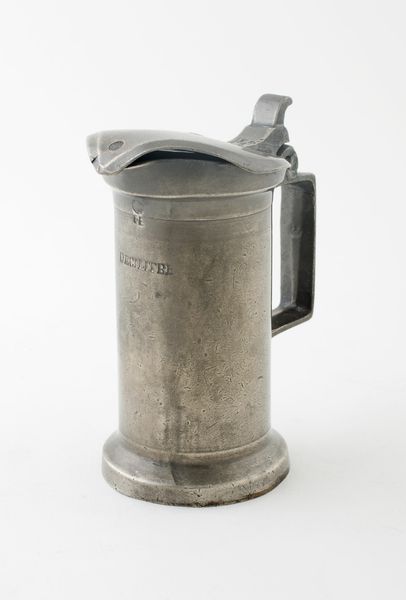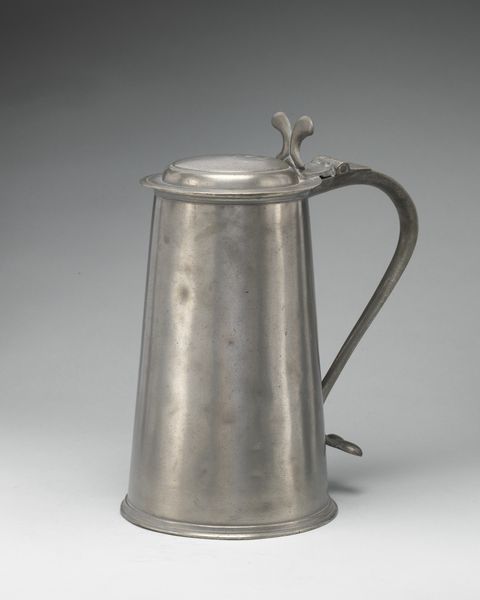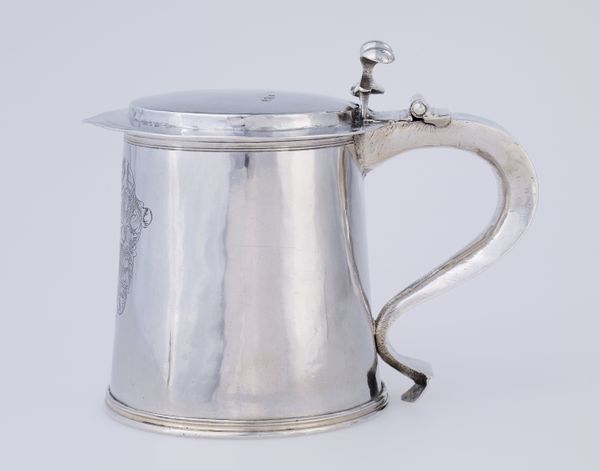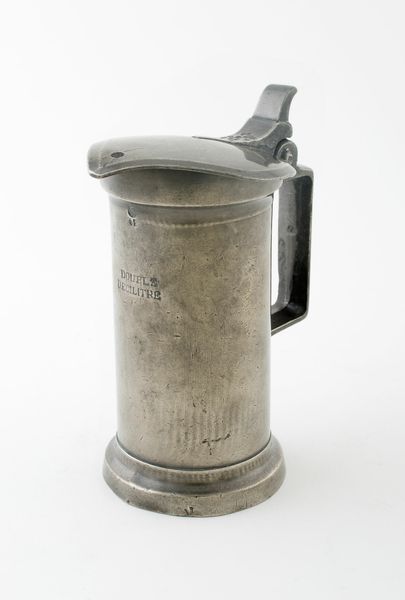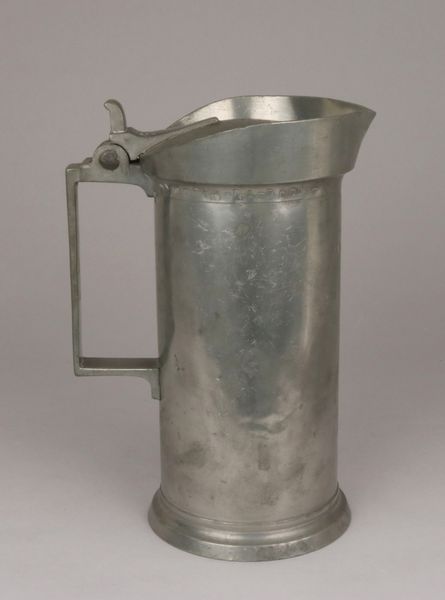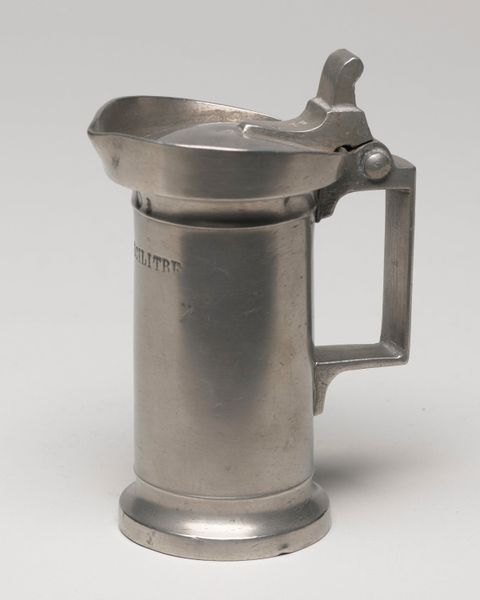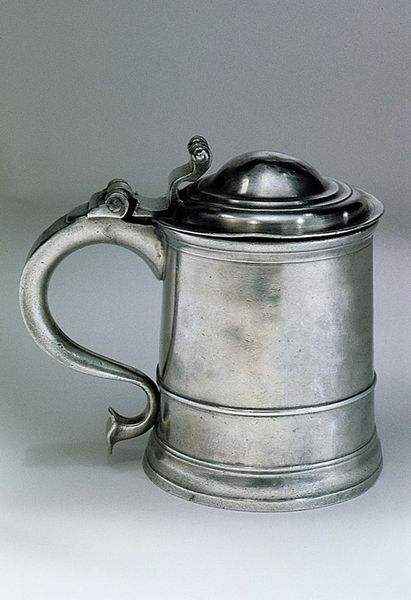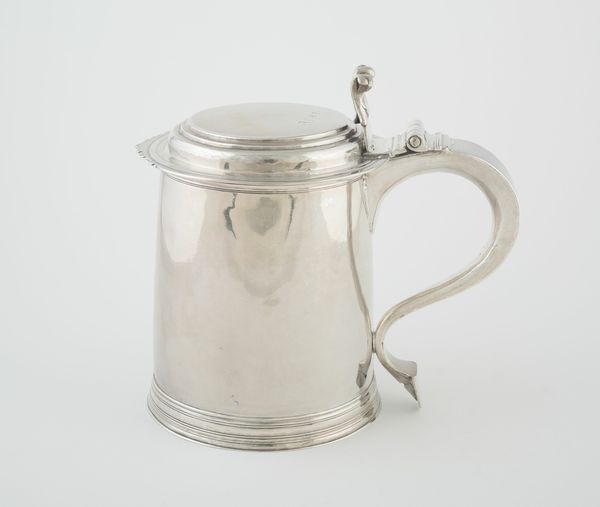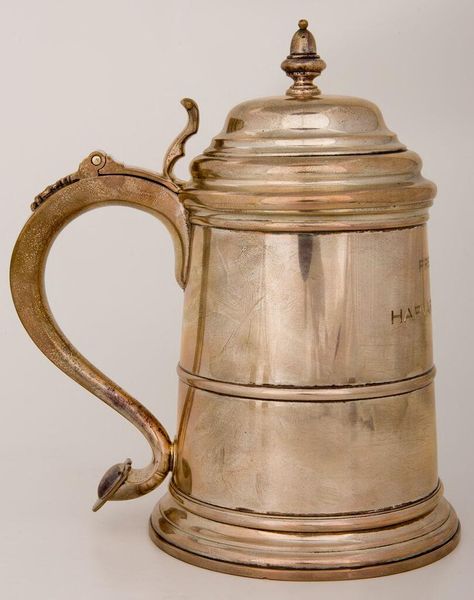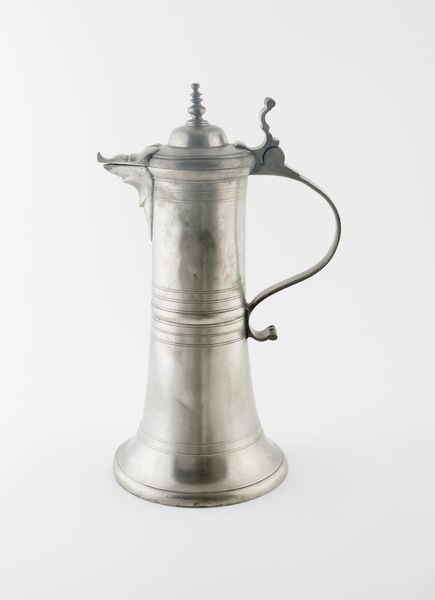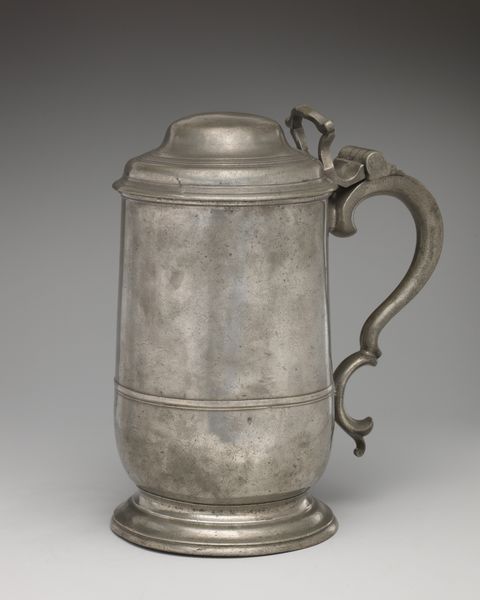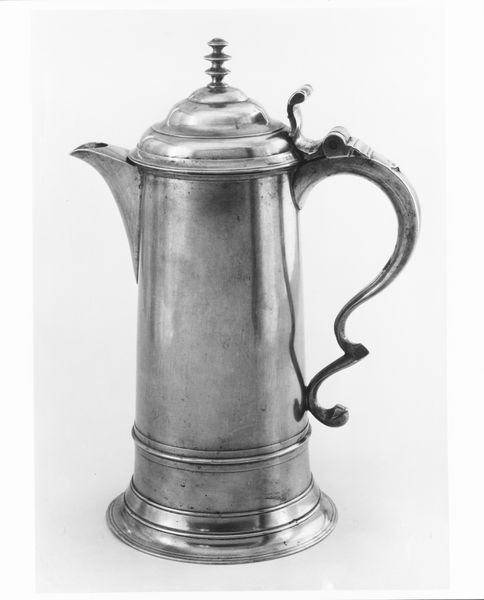
Dimensions: 25.4 × 15.9 × 23.5 cm (10 × 6 1/4 × 9 1/4 in.)
Copyright: Public Domain
Curator: Before us is a Covered Communion Flagon with Spout, likely crafted around 1787. This piece resides here at the Art Institute of Chicago. Editor: It has an undeniable austerity, almost puritanical, to my eye. The silvery pewter is quite unadorned and gives a rather solemn impression. Curator: That’s fitting, considering its intended use! Religious vessels during this era were designed with both utility and reverence in mind, a deliberate distancing from excessive ornamentation which was, ideologically at least, the anti-thesis of sincere worship. The metal from which it's wrought, probably pewter, speaks volumes too, right? Its enduring and unflashy presence served the Protestant church. Editor: Absolutely. It echoes simpler, more solemn ceremonies that contrast heavily with, say, a golden chalice glittering in candlelight. There’s an inherent democratisation in choosing such materials; it moves the emphasis away from wealth towards spiritual experience and communality. Curator: It makes you think about the cultural dynamics at play. Imagine this flagon, actively participating in the ritual, against the backdrop of rising social upheaval and Enlightenment thought spreading through Europe and the American colonies. Religious institutions had a big stake in upholding social order. Editor: Definitely, the "order" that so many of those rising movements contested. There's such tension in this flagon – this moment of change versus holding onto long traditions, and even its quiet symbolism feels… political, doesn't it? What’s really neat here is how a simple object opens onto some quite enormous subjects. Curator: I completely concur. Viewing this artifact enables a connection to social struggles surrounding it. These liturgical vessels weren't produced and used in a vacuum, and engaging with this era's artifacts lets us acknowledge past conflicts and reimagine pathways for liberation and democracy through time.
Comments
No comments
Be the first to comment and join the conversation on the ultimate creative platform.

